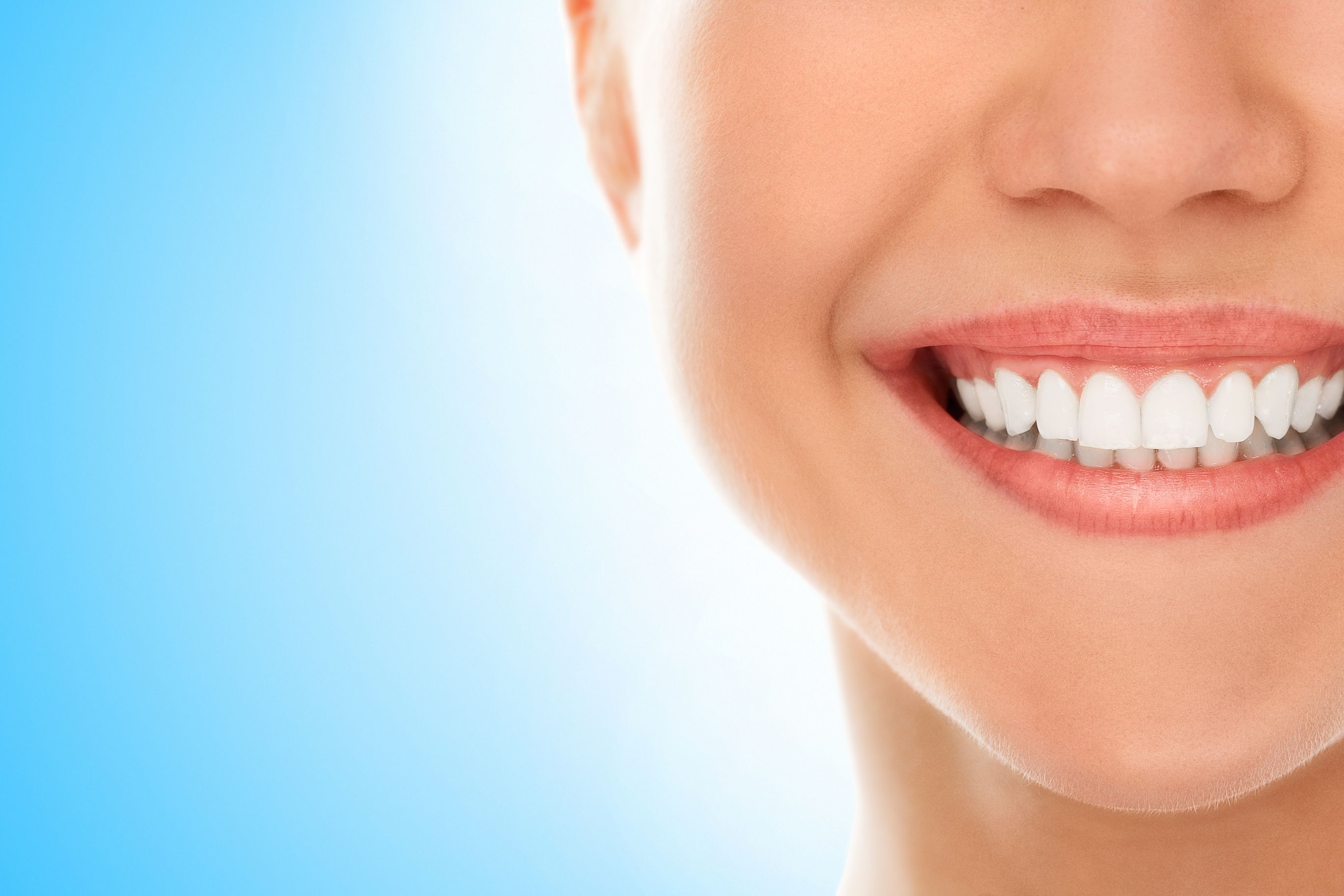Great Looking Teeth!

Thanks to fluoride in toothpaste and drinking water, better nutrition and improved dental care, Americans’ teeth are healthier than ever. But that doesn’t mean you can neglect yours.
Decay is still one cause of tooth loss, but gum disease is responsible for most tooth loss in adults age 35 and older. The best way to prevent these and other problems is to master the basics of daily dental care, especially the proper ways of brushing and flossing.
A great looking smile is often the first thing that people will notice about you and it is an easy thing to maintain if you take proper care of your teeth.
Tooth Growth & Development
What’s the difference between “baby” teeth and permanent teeth?
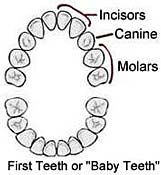 At between six and ten months of age, most infants begin to get their “baby” teeth. The central Incisors (front middle teeth) usually come in first, and then teeth begin appearing on either side and work their way back to the second molars. By the time a child has reached three years old, most of the “baby” teeth should be present. The process begins to repeat itself when the child is about seven years old.
At between six and ten months of age, most infants begin to get their “baby” teeth. The central Incisors (front middle teeth) usually come in first, and then teeth begin appearing on either side and work their way back to the second molars. By the time a child has reached three years old, most of the “baby” teeth should be present. The process begins to repeat itself when the child is about seven years old.
The central Incisors fall out first and are replaced by permanent teeth. By the age of 21, most people have all of their permanent teeth. “Baby” teeth are important because they hold the place for permanent teeth and help guide them into correct position. “baby” teeth play an important role in the development of speech and chewing. Are there different types of teeth? What do they do? Your teeth look different from one another because they are designed to do different things. The Incisors are the teeth in the very front. They’re the sharpest teeth, built to cut food and shaped to shovel the food inward.
The Canine teeth are in the corners of your mouth. Because they’re meant for grasping and tearing food, they have very long roots. Premolars are located just behind your Canine teeth. Premolars have a more flat chewing surface because they’re meant for crushing food.
The Molars are the last teeth towards the back of your mouth. Molars are much bigger than the Premolars and have bigger, flatter chewing surfaces because their job is to chew and grind the food into smaller pieces.
The parts of a tooth?
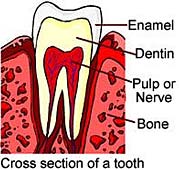 A tooth is basically made up of two parts: the crown and the root. The crown is what you see when you smile or open your mouth. It’s the part that sits above your gumline. The root is below the gumline. It makes up about 2/3rds of the tooth’s total length. Four different tissues make up each tooth. The enamel is the durable, white covering. Enamel protects the tooth from the wear and tear of chewing.
A tooth is basically made up of two parts: the crown and the root. The crown is what you see when you smile or open your mouth. It’s the part that sits above your gumline. The root is below the gumline. It makes up about 2/3rds of the tooth’s total length. Four different tissues make up each tooth. The enamel is the durable, white covering. Enamel protects the tooth from the wear and tear of chewing.
Dentin supports the enamel on your teeth. It’s a yellow bone-like material that’s softer than enamel and carries some of the nerve fibers that tell you when something is going wrong inside your tooth.
The Pulp is the center of the tooth. It’s a soft tissue that contains blood and lymph vessels, and nerves. The pulp is how the tooth receives nourishment and transmits signals to your brain.
Cementum is what covers most of the root of the tooth. It helps to attach the tooth to the bones in your jaw. A cushioning layer called the Periodontal Ligament sits between the cementum and the jawbone. It helps to connect the two.
Dental Fact: Did you know that the enamel on your teeth is the hardest substance in your body?
Wisdom Teeth
 Wisdom teeth or third molars usually appear around the age of 17 – 20. Wisdom teeth are an asset to the mouth when they are healthy and properly positioned. Often, however, problems develop that require their removal. When the jaw isn’t large enough to accommodate wisdom teeth, they can become impacted (unable to come in or misaligned). Wisdom teeth may grow sideways, get stuck under adjacent teeth, emerge only part way from the gum or remain trapped beneath the gum and bone, develop cysts and cause other kinds of problems. A large proportion of the population does not have enough room for wisdom teeth to assume a normal position.
Wisdom teeth or third molars usually appear around the age of 17 – 20. Wisdom teeth are an asset to the mouth when they are healthy and properly positioned. Often, however, problems develop that require their removal. When the jaw isn’t large enough to accommodate wisdom teeth, they can become impacted (unable to come in or misaligned). Wisdom teeth may grow sideways, get stuck under adjacent teeth, emerge only part way from the gum or remain trapped beneath the gum and bone, develop cysts and cause other kinds of problems. A large proportion of the population does not have enough room for wisdom teeth to assume a normal position.
Extraction of wisdom teeth is generally recommended when:
Wisdom teeth only partially erupt. This leaves an opening for bacteria to enter around the tooth and cause an infection. Pain, swelling, jaw stiffness and general illness can result.
There is a chance that poorly aligned wisdom teeth will damage adjacent teeth. A cyst (fluid-filled sac) forms, destroying surrounding structures such as bone or tooth roots. Patients should ask the dentist about the health and positioning of their wisdom teeth.
The dentist may make a recommendation for removal or send the patient to an oral surgeon for further evaluation.
What is Plaque?
Plaque is a film of bacteria and mucous that grows on your teeth. Some of the bacteria in the plaque make acids which decay your teeth. Other kinds of bacteria in the plaque make toxins which cause gum disease. The easiest and most effective way to remove the plaque from your teeth is to brush and floss. Those costly rinses just don’t do it! When the plaque is hardened on your teeth it is called tartar or calculus. Then you need a Dental Hygienist or Dentist to remove it by “scaling” the tartar off.
Brushing
 Brushing removes food particles and plaque from your mouth, making your teeth look cleaner and breath feel fresher. Brush at least twice a day with a fluorinated toothpaste that has the American Dental Association (ADA) seal of acceptance. Use a toothbrush with soft, rounded bristles and replace it every three months. Follow theses steps to clean all surfaces…
Brushing removes food particles and plaque from your mouth, making your teeth look cleaner and breath feel fresher. Brush at least twice a day with a fluorinated toothpaste that has the American Dental Association (ADA) seal of acceptance. Use a toothbrush with soft, rounded bristles and replace it every three months. Follow theses steps to clean all surfaces…
First…
To clean outer surfaces, tilt the brush so its bristles point toward the gums. Use short, side-to-side strokes, moving across your teeth in a circular motion. Also clean the gums.
Next…
To clean chewing surfaces of the molars, hold the brush flat. Gently scrub your teeth by moving the brushed back and forth.
Then…
To clean inner surfaces of your back teeth brush in a circular motion at a 45-degree angle. And don’t forget the gums. To clean the inner surfaces of your front teeth, hold the brush vertically and use gentle up and down strokes.
Flossing
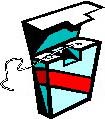 Brushing keeps your teeth fairly clean, but it can’t reach plaque and food between teeth and under the gum line. Daily flossing will keep plaque from building up in these hard to reach areas. There are two types of floss — waxed and unwaxed. Use whichever you prefer. To make sure you floss all your teeth, start behind the upper and lower molars at one side of your mouth and work toward the other side and it up. Break off about 12 inches of floss and wind most of it around your middle fingers.
Brushing keeps your teeth fairly clean, but it can’t reach plaque and food between teeth and under the gum line. Daily flossing will keep plaque from building up in these hard to reach areas. There are two types of floss — waxed and unwaxed. Use whichever you prefer. To make sure you floss all your teeth, start behind the upper and lower molars at one side of your mouth and work toward the other side and it up. Break off about 12 inches of floss and wind most of it around your middle fingers.
Slide the floss between the teeth using a gentle sawing motion until it reaches the gum line. Carefully slide the floss between the gum and tooth following the shape of the tooth. Scrape the sides of the tooth by moving the floss up and down. Unwind and use clean floss as you continue flossing.
How Do Braces Work?
Having straight teeth is important. Teeth that are crooked or out of place (misaligned) affect the way a person chews and talks and how their smile looks. Because they have unnatural spaces, crooked teeth are harder to clean and are more likely to have cavities. In some cases, crooked teeth can affect the way the jaws line up and can cause pain and discomfort. One method to correct this is to have Orthodontic treatment (or braces and retainers as they are sometimes called).
Orthodontic treatment works by exerting a gentle pressure over time to straighten teeth that are growing, or have already grown, out of place.
Braces have three basic parts:
- Brackets – brackets that are attached to each tooth
- Bonding or band – the material that attaches the bracket to the tooth
- Arch Wire – a thin metal wire that runs from bracket to bracket Braces have come a long way from the “train track” look of years ago.
Today, many orthodontic patients can get braces that attach to the backs of the teeth, or use transparent brackets. A retainer is a custom-made, removable appliance that helps keep teeth in their new, straightened position after braces have been removed. Retainers can also be used to treat more minor orthodontic problems.
Endodontic Treatments (Root Canal Therapies)
Our teeth are meant to last a lifetime. Sometimes, however, damage occurs to a tooth (often from a deep cavity or an injury that causes a tooth to crack) and the inside of the tooth becomes infected. This infection damages the pulp of the tooth. Left untreated, the damaged pulp can cause infection that will damage the bone around the tooth and cause swelling and pain. If the damaged tooth is left untreated it becomes infected. Your dentist or a dental specialist called an Endodontist, may have to perform an endodontic treatment (often called Root Canal Therapy) to save it. Endodontic treatment involves opening the tooth, removing the damaged pulp, cleaning, shaping, filling and sealing the tooth.
More Tips For Dental Care
- Use fluoride, which strengthens tooth enamel and helps prevent the bacteria in plaque from causing cavities. Some drinking water is fluoridated, and toothpastes and mouth rinses with the ADA seal contain proper amounts of fluoride.
- Eat a balanced diet that includes fruits and vegetables, cereals, dairy products, and meat. Calcium is essential for strong teeth and bones. Good sources include milk, cheese, yogurt, and tofu.
- Don’t chew on hard substances like ice or popcorn kernels and don’t grind your teeth. These habits can damage to the enamel.
- Cigarettes and chewing tobacco can stain your teeth, and contribute to gum disease or even cause oral cancer.
- Excessive amounts of coffee, tea or red wine may stain in your teeth.
- See your dentist every six months for a general check up and cleaning.
- Replace That Old Tooth Brush! — Dentists and hygienists recommend changing your toothbrush at least three times a year. Most Americans replace their toothbrushes every 9 to 12 months. But dentists recommend replacing a toothbrush every three to four months, because worn bristles may not clean teeth and gums effectively. So if your current brush has seen better days, make a change. And while you’re at it look for a toothbrush that has dual bristles to remove bacterial plaque between teeth at the gum line.
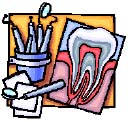
- Dental Health Center
- The Benefits of ‘Braces’
- What Are Cavities?
- White Teeth and Cosmetic Dentistry
- Good Nutriton Also Helps You Keep A Great Smile!
